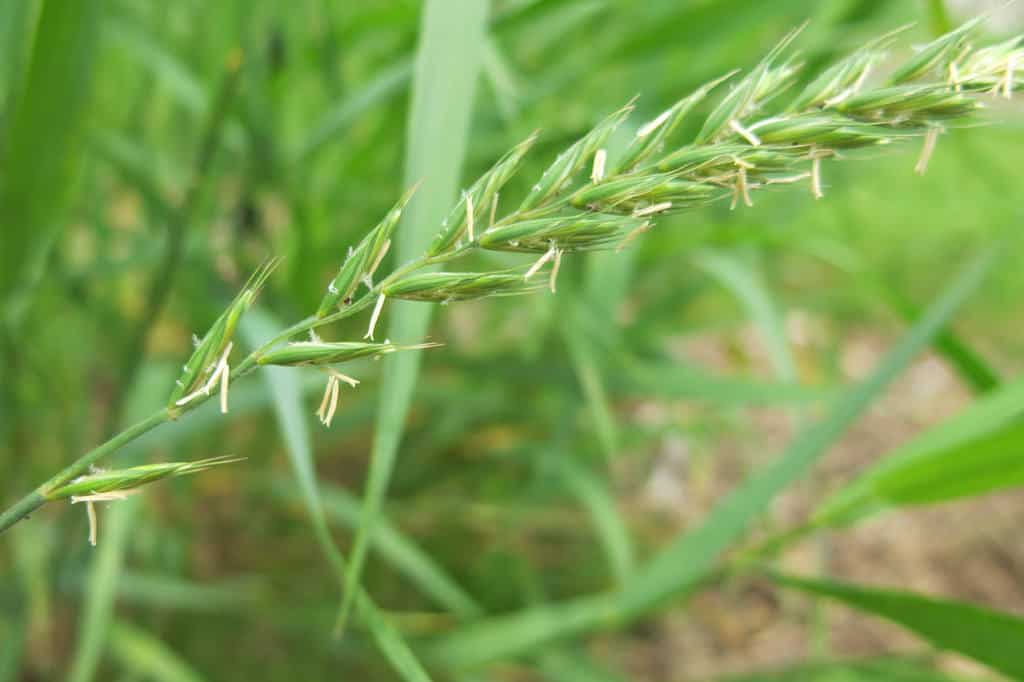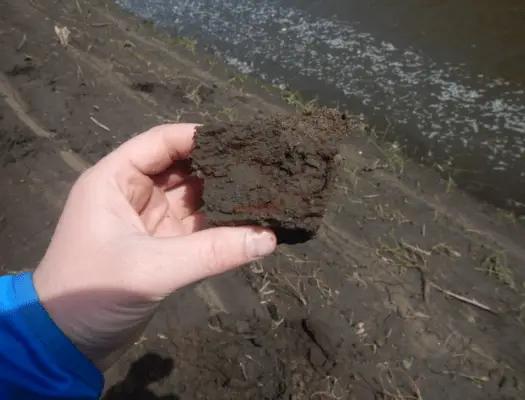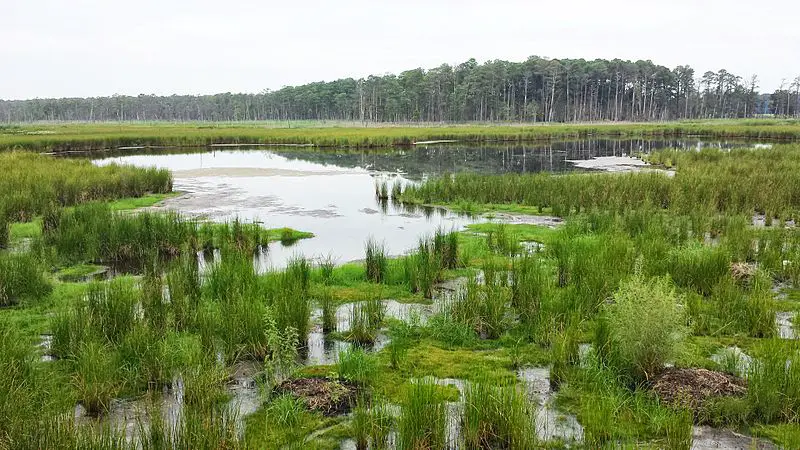You know you’ve been avoiding it, learning how to identify those tricky wetland grasses. Somehow, they just keep coming back to haunt you – even appearing to dominate your wetlands. Often, only a few sparse grass plants poke up through the other plant species. However, if they do happen to be the dominant plant in your wetlands, you’ve got a problem – and the need to properly identify them becomes critical as it can make or break your wetland determination (does it have wetland vegetation or not?).
Here, I’ve provided some quick tips for making that foreboding task of wetland grasses identification a little easier by introducing a little grass identification terminology and describing a few example species which may or may not occur in your area. Hopefully this makes wetland grasses identification a little more fun too!
Table of Contents
Basic grass anatomy
If you’re going to crack open that brand new wetland plant ID book, you’ll need to learn some basic grass anatomy terminology to help you navigate the dichotomous keys or plant descriptions. You might also want a good hand lens for peeking at those tiny grass pieces.
For starters, grasses are angiosperms, just like tulips and daises – they have flowers. Once you know this, a whole new world is opened up! Because they have flowers, they have reproductive floral parts like stigmas and anthers (female and male respectively).
In grasses, these are enclosed in two bracts called the palea and lemma. This makes up what is called a floret, aka, grass flower. However, depending on the species, grasses can have any number of florets grouped together in what is called a spikelet.
The spikelet is furthermore subtended by two more bracts, called the lower and upper glume. Glumes can be critical to identifying certain grass species, as can the number of florets in a spikelet. Each spikelet is connected to the grass stalk or rachis by a pedicel.
The rachis is the grass inflorescence, or flowering branch. This inflorescence is not a leaf or blade of grass. Most often, when you see a bunch of grass, you are only seeing the leaves or blades of grass (vegetative form). However, when grasses flower, they send up the inflorescence branch or rachis and each individual grass flower opens up.
If you’re lucky and observant enough, you’ll be able to see tiny stamens and stigmas sticking out of each floret – some of these, like switchgrass (Panicum virgatum) have quite colorful and beautiful inflorescences. So don’t forget your field camera, and hand lens when searching for switchgrass in the wet meadows and mesic tallgrass areas of the Great Plains.
If you’re not lucky enough to see your wetland grass in flower, you’ll have a much trickier time with wetland grasses identification since you won’t have the floral parts to key it out. What you will have is the leaves.
Now, what is so distinctive about the leaves that you can identify a grass by you ask? Interestingly enough lots of things, but I want to point out three in particular:
- the collar of the grass blade, where it connects to the culm,
- the presence or absence of a crimped leaf or x and,
- the tip of the blade.
There are several different ways a blade of grass can connect with the culm, all with very distinctive features. The more common features are ligules and auricles.
Ligules, which are my favorite, can be membranous, hairy, long or short or not present at all. It’s pretty cool when ligules manifest themselves as hairs, most notably in one of my favorite grass species, sand dropseed (Sporobolus cryptandrus) which has the look of “exploding hairs” at its collar. As its name suggests, this species often occurs in the historic sandy floodplains of alluvial river systems like the Platte River.
Auricles, which are most commonly present in wheat grasses, look like a pair of clasping fangs and can be long and claw-like, short and stubby or not present at all. In western wheatgrass (Pascopyrum smithii), these auricles often have a purplish hue. The auricles, in addition to the bluish color of western wheatgrass and the “cat’s tongue” feel to the leaf blades helps this species to be one of the more easily identifiable grass species in the western U.S. and can often be found in dry swales or on the outskirts of plays wetlands in heavier soils.
Many grass species occurring in or near wetlands have wide leaf blades, such as reed canary grass (Phalaris arundinacea), smooth brome (Bromus inermis) and quackgrass (Elymus repens). Note that these three species are often encountered in or near wetlands in the western U.S. and they are often confused because of their wide leaves. All three are also perennial rhizomatous cool season grasses!
Another feature two of these species have in common, most likely because of their wide leaves, is the presence of a plication, or crimping of the leaf blade, often having the appearance of pleating or being folded like a fan. In quackgrass, this often appears as a “w” towards the tip of the leaf blade. In smooth brome, it also appears as a “w” but more towards the lower third of the leaf blade. So, if you think you have one of these three grasses, but there is no plication, then you may have reed canary grass.
One more thing I want to point out about grass leaves is for the Poa genus (blue grass) in particular because this genus commonly occurs in wetlands. The leaves of grasses in the Poa genus have what many have come to describe as a “canoe tip.” Imagine that the leaf blade is the hull (or body) of a canoe and at the front of the canoe you have the bow. The tip of a blade of Poa grass looks just like the bow, with a cup-like joining of sides, versus other grass species which can have rather pointed and flattened leaf tips. Poa species commonly seen in wetlands include Kentucky bluegrass (Poa pratensis) (yes, it’s also growing in your lawn and wouldn’t survive if you didn’t water it so much) and fowl bluegrass (Poa palustris). Note that these two species can be distinguished from each other based on their growth forms (caespitose in fowl bluegrass and rhizomatous in Kentucky bluegrass).
Stoloniferous or rhizomatous?
Many grasses which don’t present themselves as an isolated clump or with a caespitose growth habit (aka bunchgrasses) but rather sprawl across the ground and form wide patches are actually spreading via either stolons or rhizomes. Stolons are aboveground horizontal stems – think strawberry plants. One stoloniferous grass species I frequently encounter in riparian wetlands is creeping bentgrass (Agrostis stolonifera) and as the name implies, it spreads over the ground often forming a short mat of grass. There is another common wetland grass in the same genus of Agrostis which does not have stolons – redtop (Agrostis gigantea) – but spreads instead by rhizomes, which are underground horizontal stems. Note that quackgrass also has rhizomes which are distinctly aggressive with sharp and pointy tips.
Now there’s a bunch more terminology to nerd out on, but I won’t cover that here. Rather, I’ll suggest a few good books:
Wetland Grasses Identification Summary
So, there, you have 10 grass species in your pocket now, and a bunch of new terminology. On your next delineation, remember, grasses with flowers/inflorescences are easier to identify when trying to key them out, so look around for a plant that has their flowers.
If all you have is leaves, there’s still hope. Check the collar for an auricle or ligule and the leaf blade for a plication or canoe tip. Finally, is it a bunchgrass or is it spreading by aboveground stolons? And don’t be afraid to dig up the underground parts of the grass to see if it has aggressive rhizomes.
Most of all, don’t get frustrated – there are, after all, over one thousand grass species in North America! The good news is, in your region, and in the wetlands you typically see, there are probably not that many, and by learning a little grass terminology, you are already ahead of most wetland professionals out there.
Note that this article is written for the field folks out there – the ones performing wetland delineations, in the cold, the rain, the middle of winter, but hopefully in the middle of summer when grasses are in bloom! This article is not meant to be all inclusive – it’s not a guide.
I mention a few species which I frequently see but may not occur in your region. This article is more meant to familiarize you with a few terms which may help you key out your own grass species using a dichotomous key and provide you with some key examples of how this terminology can be applied.
If in doubt, the best resource for plant identification is your local herbarium, where you can compare a sample of an unknown grass species to dried specimens which have been expertly identified. Finally, if you are ready to truly nerd out with wetland grasses identification, you may want to invest in a good dissecting scope, which will enable you to see those tiny grass parts in all their glory.
Good luck!



